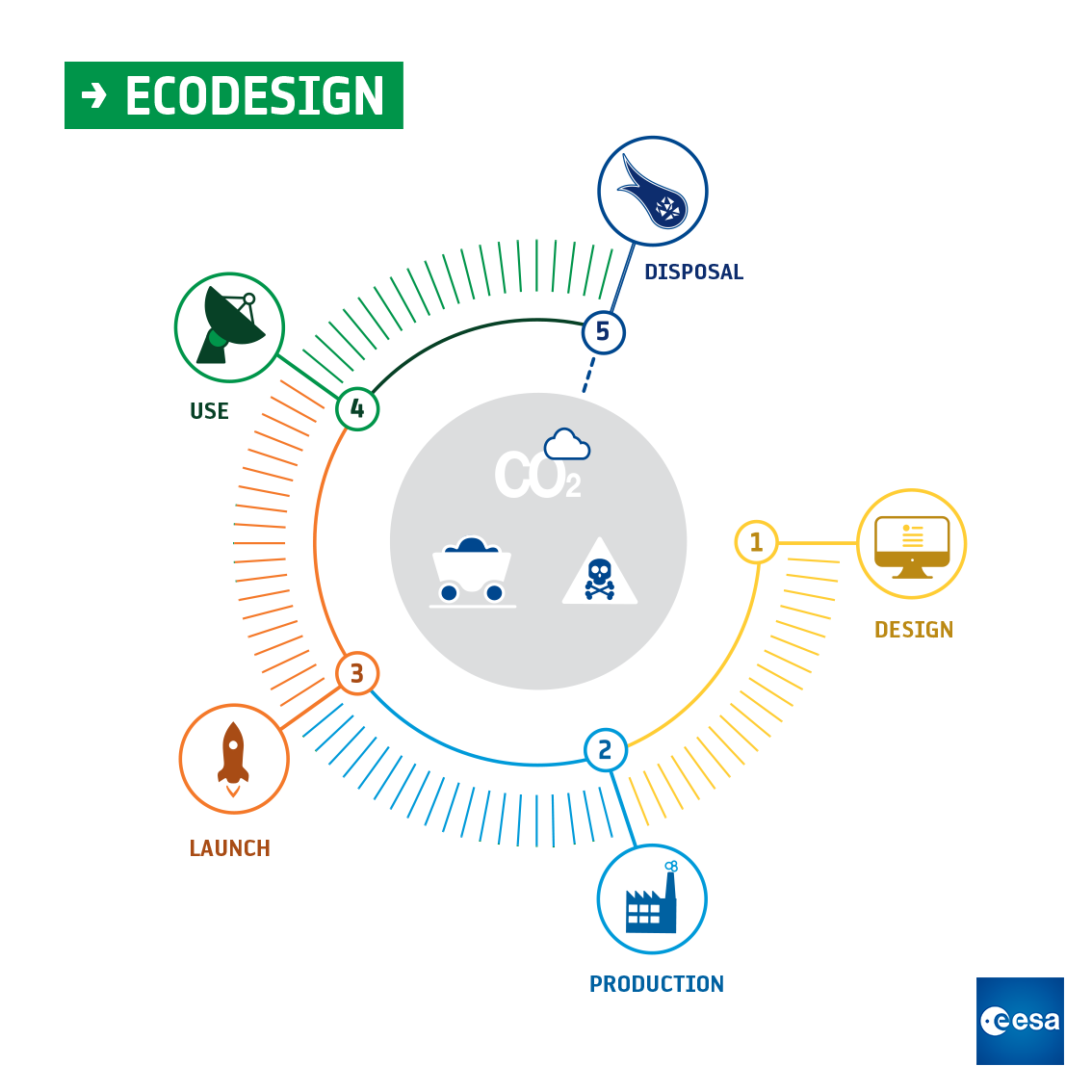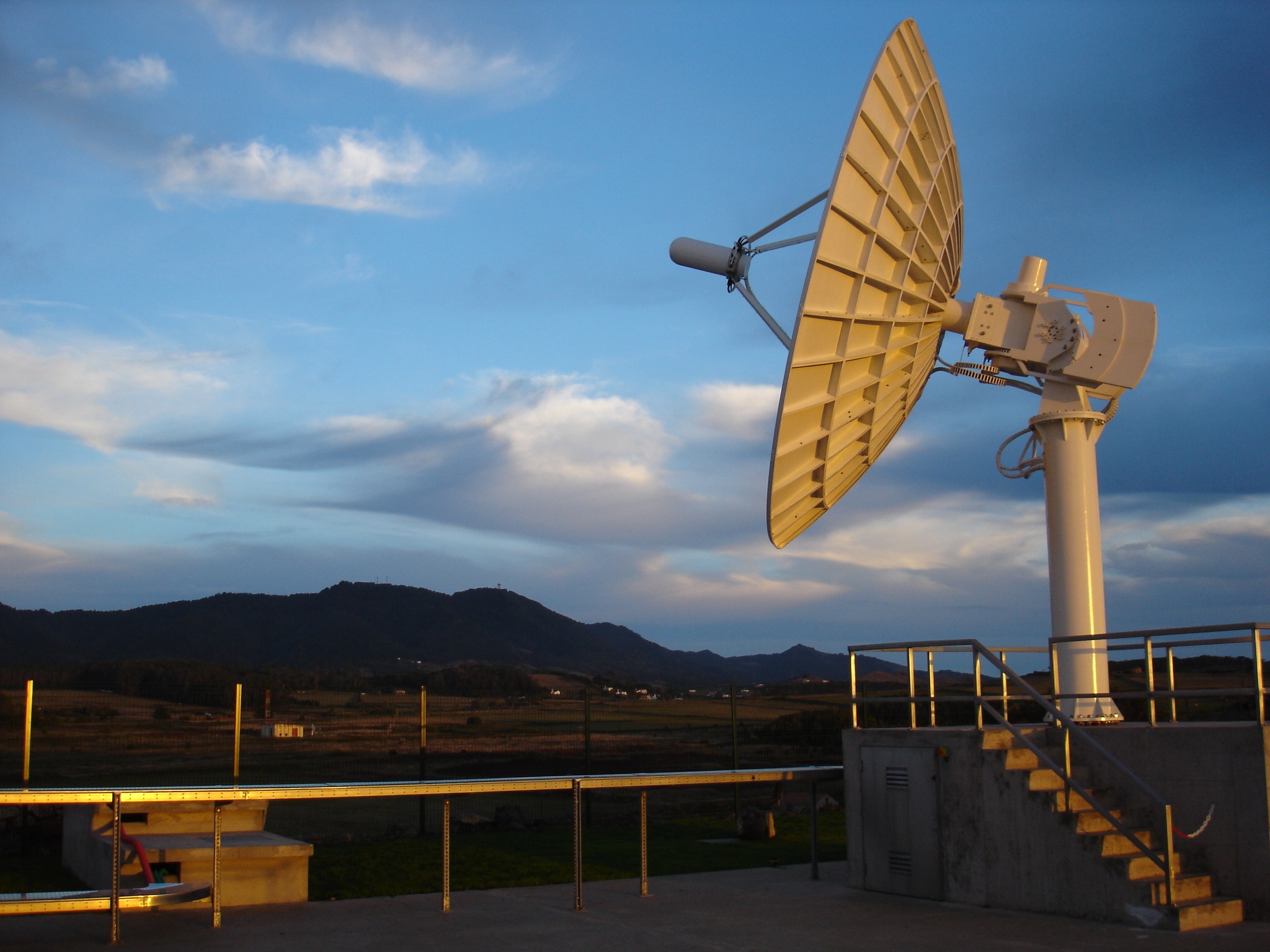The Life Cycle Assessment (LCA) studies performed by ESA up until now focussed on both spacecraft and launchers and identified the environmental impact in terms of various environmental indicators such as Global Warming Potential, Ozone Depletion Potential, Human Toxicity Potential, Metal Depletion Potential to name but a few.

EcoDesigning a space mission
Credits: ESA
As space is a very unique sector, some adaptations were needed in order to apply LCA to space. Dedicated studies were also performed which resulted in dedicated space-specific LCA datasets to be made available to European stakeholders. An ESA Handbook has been published to capture all this knowledge and will provide guidelines for future users about how to conduct an LCA in the space sector.
One area explored in less detail during our space missions study was that of the ground segment. It was however identified as an environmental hotspot, particularly for toxicity indicators. A different industrial breakdown exists for ground segment buildings and equipment and each mission will have specific ground segment constraints. The combination of these factors means that a deeper study of the ground segment is relevant and necessary to more fully understand the environmental impacts of space activities, as a preliminary step before working to reduce these impacts.

Santa Maria Station
Credits: ESA
The Invitation To Tender for this subject has been published in ESA’s online tendering system EMITS on 1 November. All industry interested in this study is invited to read the Statement of Work at the following link:
https://emits.sso.esa.int/emits/owa/emits.main
The objective of this activity is to perform a Life Cycle Assessment of the environmental impact of different ground segments across the range of European missions, developing methodological guidelines and datasets for integration into the ESA LCA database. Finally, ecodesign options will be investigated to reduce the environmental impact of European ground stations in future.





Discussion: 30 comments
good luck .
great post.
wish you luck
Nice contribution.
very good . thanks
very good
tanq very good
very good article and good lock
very good article
like, thank you
very nice
great…. good luck
Thanks for sharing post.
good luck .
great post.
like, thank you
Thanks for sharing post.
tanq very good
Nice contribution.
very nice tx
We depend on this kind of research to advance technology.
Thanks for this post
It is interesting for me to study the lCA space
Can foreigners also participate in this bid?
Hi,
It depends of what could mean by foreigners. ESA Member States could bid. You will find more information on how to work with ESA here: https://www.esa.int/About_Us/Business_with_ESA
This bid is already closed though.
Best regards,
Jessica
perfect
It is very good
I followed this post
that was perfect
thanks for care to the earth.
i think esa very help to the earth planet and we must thanks fo that.
thank you
https://madaran.net